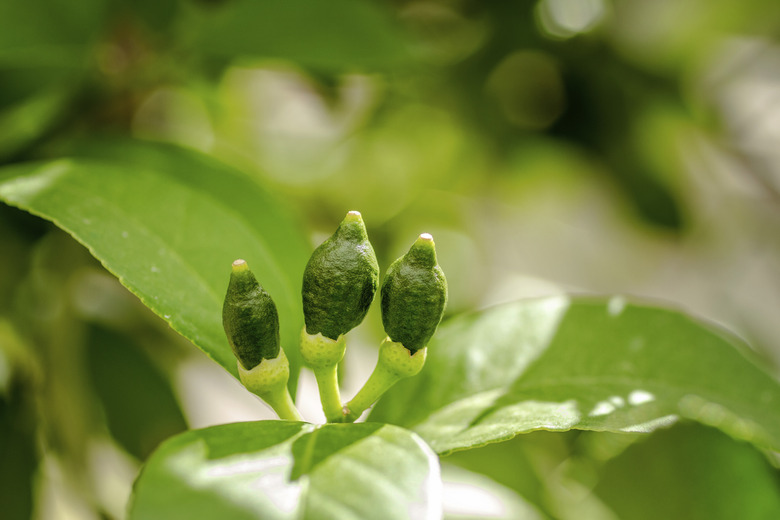When To Prune Meyer Lemon Trees?
Growing naturally to a compact size, Meyer lemon trees (Citrus × meyeri) don't need regular pruning. These decorative evergreen trees grow 6 to 10 feet tall and 4 to 8 feet wide, and they can be grown in containers. Late frosts sometimes damage Meyer lemons, though the trees are hardy in U.S. Department of Agriculture plant hardiness zones 9 through 11. Frost-damaged stems should be pruned, and light pruning later in the year can improve the trees' shape. **Wipe pruning shear blades with a cloth that was dipped in rubbing alcohol, before and after pruning Meyer lemon trees.** For branches thicker than 1/2 inch, use loppers or a pruning saw.
Waiting for Signs of Frost Damage
Frost damage on Meyer lemon trees may not be noticeable until late spring. Meyer lemons grow best in climates where temperatures range from about 58 degrees Fahrenheit at night to about 72 degrees Fahrenheit in the daytime. Frost damages leaves, stems, flowers and developing fruits, and prolonged or severe frosts can affect large areas of trees.
Wait until new growth appears before pruning frost-damaged Meyer lemon trees. Some stems may seem to be damaged but sprout new leaves; other stems may look fine but have died. If you're unsure whether a stem is alive, scrape the bark back with your thumbnail. The wood just under the bark of living stems is green.
Pruning Frost-Damaged Stems
Pruning frost-damaged stems on Meyer lemon trees in late spring helps prevent diseases and improves the trees' appearance. Frost-damaged stems are sometimes dark and may look shriveled. They also don't produce new leaves when the rest of the tree is growing healthily.
Frost damage affects stem tips and whole stems. Prune frost-damaged stem tips just above the nearest leaf, and prune damaged stems where they join healthy growth. Pick off blackened, or discolored, wilted leaves, flowers and fruits. Frost-damaged Meyer lemon trees can recover from severe frost damage, though it may take several years.
Shaping Meyer Lemon Trees
Meyer lemon trees occasionally benefit from light, late summer pruning to improve their shape. In late summer most Meyer lemon trees have stopped growing, and as temperatures fall the trees harden their bark to prepare for winter.
When pruning Meyer lemon trees for shape, don't remove the lower portion of the stems to create a clear, smooth trunk. The lower portion of the trees produces plenty of fruit, and it's also the most accessible area for harvesting.
Pruning in Late Summer
Pruning Meyer lemon trees in late summer involves removing stems that are overly long, crossing or generally spoil the trees' shape. Meyer lemon trees growing as a hedge can be lightly clipped in late summer.
When there is no fresh, new growth on the trees, prune overly long stems at the desired length just above an outward-facing leaf. Prune crossing stems and stems that spoil the trees' shape where they join the rest of the tree. To clip a Meyer lemon tree hedge, prune stems at the desired length just above the nearest leaf. Don't cut leaves in half because this creates a rough, unattractive effect.
